Index
- XFX Black DD Radeon 7790 1075M Boost reviewed
- Packaging
- A closer look at Black DD R7790
- Testing methodology
- Crysis 3
- Far Cry 3
- Hitman Absolution
- Metro 2033
- Sleeping Dogs
- Dirt Showdown
- Aliens vs Predator
- 3DMark 11
- 3DMark
- Unigine Valley
- Unigine Heaven
- Overclocking
- Thermal, Noise and Consumption
- Conclusion
- All Pages


Review: HD 7790 Best Of Edition
AMD recently introduced the HD 7790, its first Bonaire-based card which fits snugly in between the HD 7770 and HD 7850, not to mention a couple of Nvidia cards. The new Bonaire GPU is a 28nm CGN part, optimized for superior power efficiency.
The specs have low-mid-range written all over them. Compared to Bonaire (HD 7790), the old Pitcairn Pro (HD 7850) has more stream processors (1024 compared to 896), more texture units (64 compared to 56), a faster memory interface (256-bit compared to 128-bit) and more ROPs (30 ROPs compared to 16 ROPs). As we can see, Bonaire's memory interface is a lot weaker than the HD 7850, but this shortcoming is partially offset by the use of speedy 6Gbps GDDR5 memory.
The Radeon HD 7770 also has a 128-bit memory interface, but it uses slower 4.5Gbps GDDR5, memory. Hence, its memory bandwidth is 72GB/s, compared to 96GB/s on the HD 7790. The rest of the specs, such as 640 stream processors and 40 texture units, are also behind the HD 7790.
Today we’ll take a very special HD 7790 card out for a spin. The XFX Black DD Radeon 7790 1075M Boost Edition is an overclocked card with a custom cooler. Its GPU is clocked at 1075MHz, while the memory ticks at 6400MHz. The reference clocks are 1000MHz for the GPU and 6000MHz for the memory.
The higher clocks are just one of the selling points. A strict selection process called ‘GPU Edging’ is used to identify the top 1 percent of GPUs capable of reaching maximum overclock speeds and with help of quality Duratec components (another marketing name for high end power components) XFX claims the highest performance and the lower power consumption in class.
Plenty of other AMD partners introduced overclocked HD 7790 cards, but none of them went over 1075MHz. It is clear that AMD suggested the highest clock for OC cards and we believe this was a marketing decision rather than a technical one. We were convinced that the HD 7790 could hit much higher clocks with relative ease and our overclocking tests proved us right.
In order to compensate for higher temperatures caused by the factory overclock, the Black DD R7790 card comes with a powerful Double Dissipation cooler – a cooler with a special heatsink and two fans which should cope with the demands of the Bonaire GPU with ease.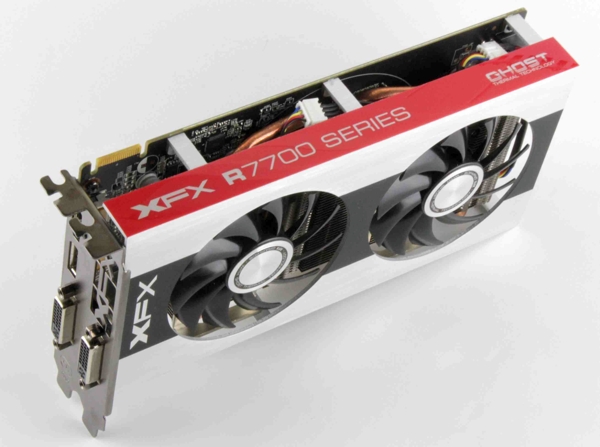
Thanks to AMD’s more than generous bundle scheme, the Radeon HD 7790 is eligible for a nice freebie in the form of Bioschock Infinite and Far Cry 3 Blood Dragon. However, prior to making your purchase please make sure that your retailer is participating in the promotion, just to stay on the safe side.
XFX’s standard packaging for the HD 7000 series is almost identical to that for the HD 5000/6000 series, but we like compact packages. The cardboard is tough and will shield the card from the usual abuse in transport. In the box we found a CrossFire conector, Black Edition badge, driver CD, short user manual and a few ads. XFX opted for standard size connectors, so there are no additional converters in the box.
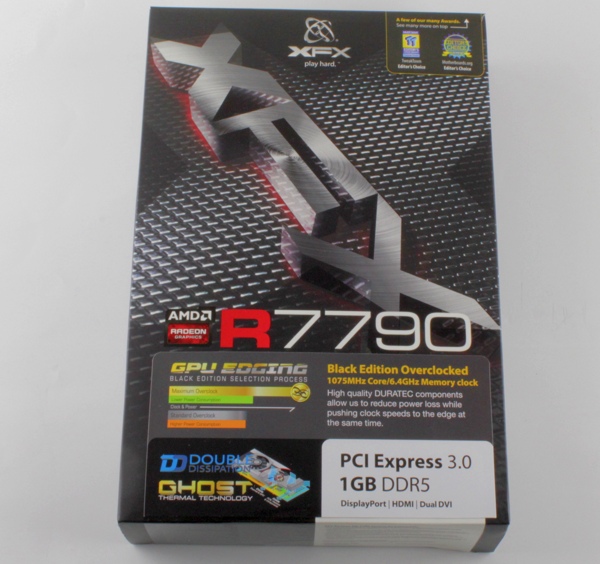
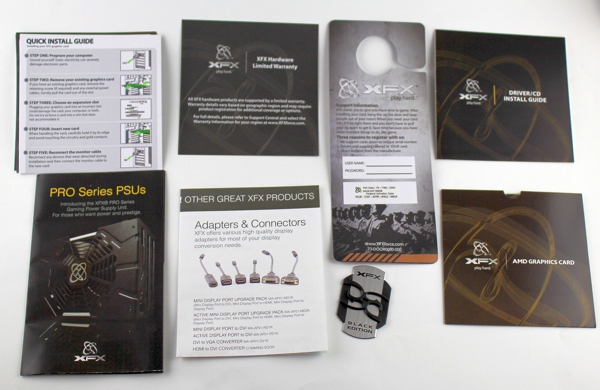
XFX’s R7790 Black Edition’s full name is Black DD Radeon 7790 1075M 1GB Boost Ready D5 DP HDMI 2XDVI (Part No.: FX-779A-ZDB4). The top of the card features a red stripe with a short product descrption.

Hand in hand with its launch of AMD 7000 series of graphics cards, XFX introduced the Ghost cooler. It comes in two flavors – single and double fan versions. The latter is called Double Dissipation (DD) and is the one used on our sample. The version with two fans is quieter and offers more headroom for overclocking. All the coolers used by XFX on HD 7900/7800/7700 series are two slots wide, regardless of whether they have a single fan or two fans.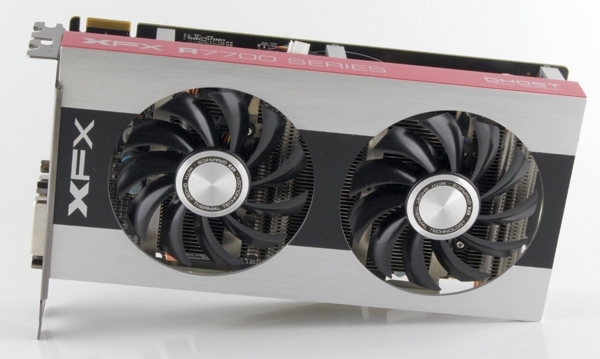
The Black DD R7790's cooler comes with a nice aluminum frame and the two fans will ensure stable operation of the overclocked GPU. The card uses an IP5X Dust Free fan and XFX Bracket Design.
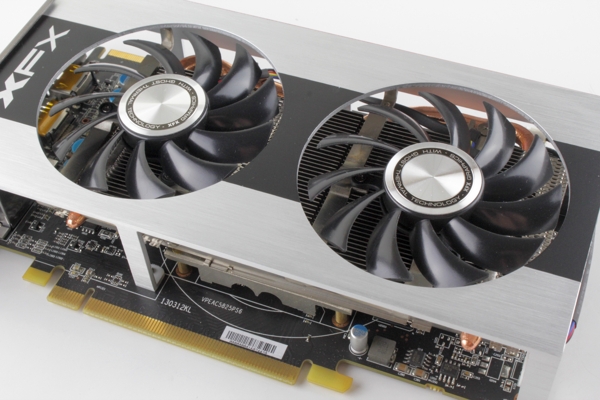
The PCB is in-house designed and built and features quality Duratec professional grade power components.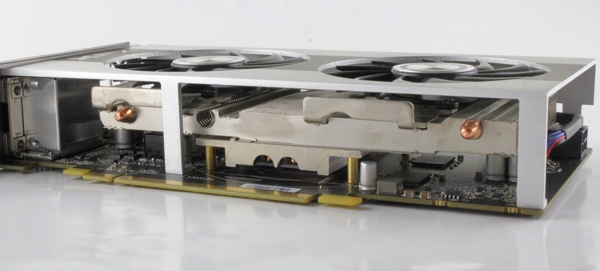
The cooler uses a large copper plate which is connected to the heatsink, although the memory is cooled only by air. XFX used GDDR5 chips made by Hynix (model number H5GQ2H24AFR R0C). These chips are specified to run at 1500 MHz (6000 MHz GDDR5 effective), but XFX factory overclocked them to 6400MHz. On the back side are four of eight memory ICs.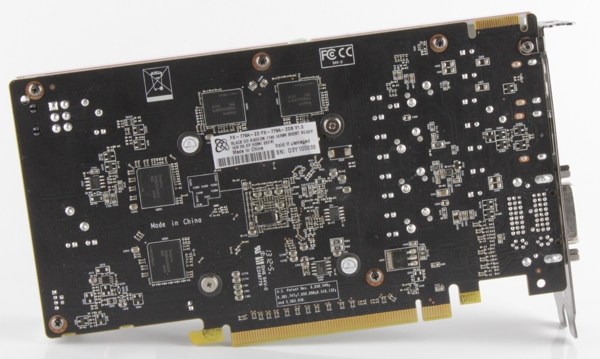
The Black DD R7790card has two dual-link DVI outs (one SL-DVI and one DL-DVI), one standard HDMI 1.4a and one standard DisplayPort 1.2 out.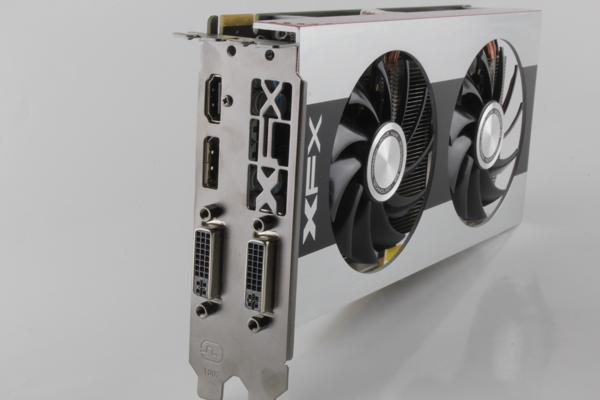
The card is about 20cm long, and you may combine this card with another HD 7790 card from any vendor in a CrossFire configuration. 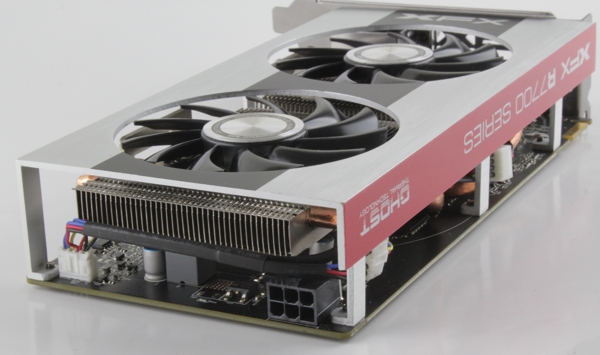
Testbed:
- Motherboard: EVGA Z77 FTW
- CPU: Ivy Bridge Core i7 3770 (4.5GHz)
- CPU Cooler: Gelid The Black Edition
- Memory: 8GB Corsair DDR3 2400MHz
- Harddisk: Corsair Neutron GTX 240GB
- Power Supply: CoolerMaster Silent Pro 1000W
- Case: CoolerMaster Cosmos II Ultra Tower
- Operating System: Win8 64-bit
Drivers:
- Nvidia 314.22-whql
- AMD 13.3_Beta3
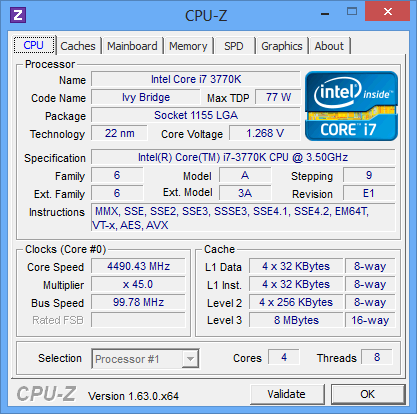
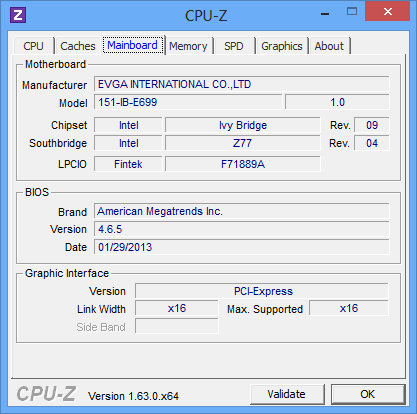
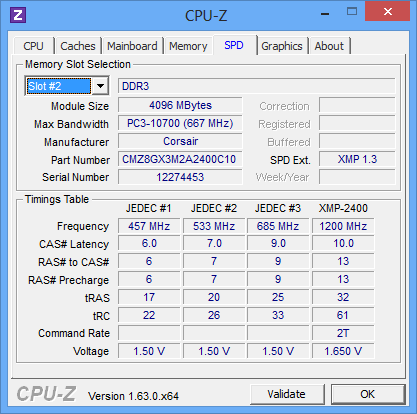
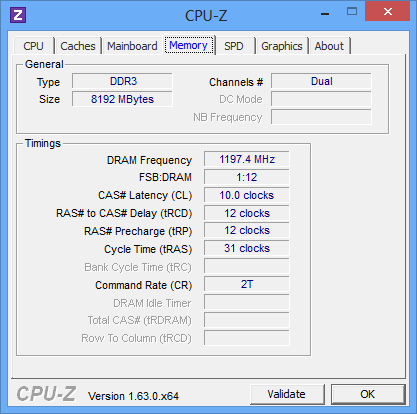
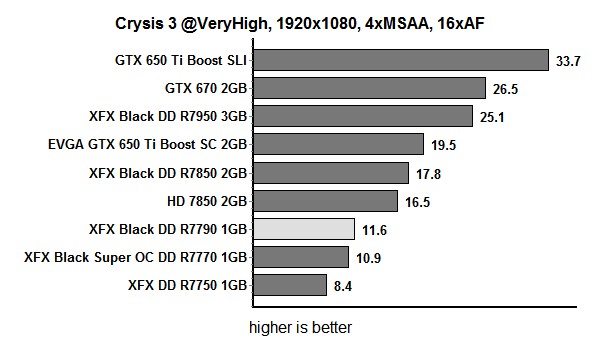
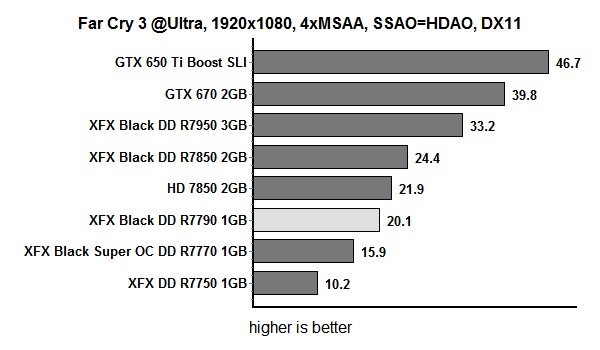
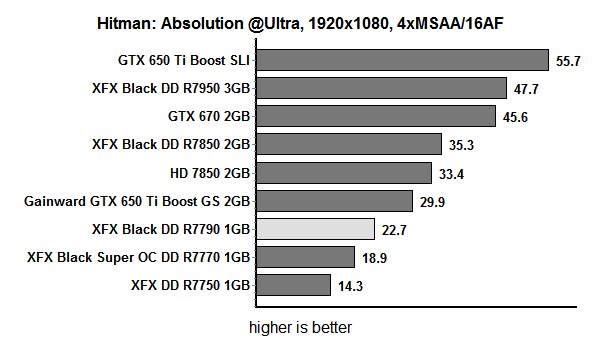
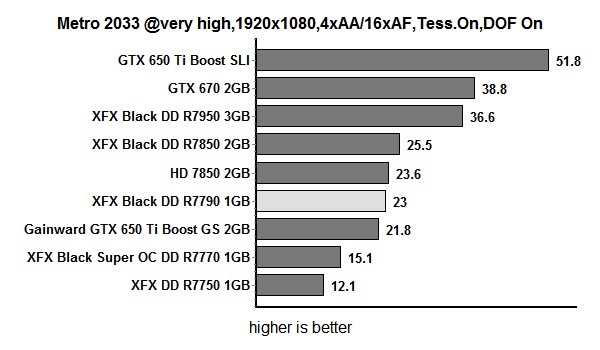
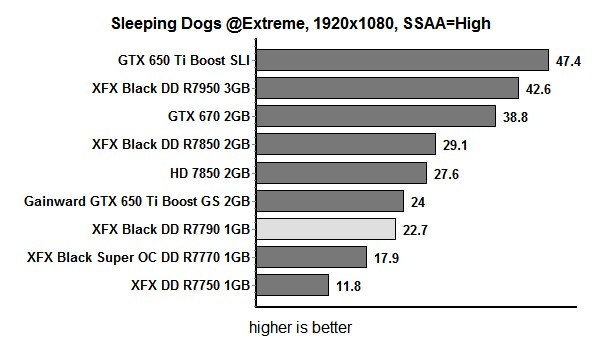
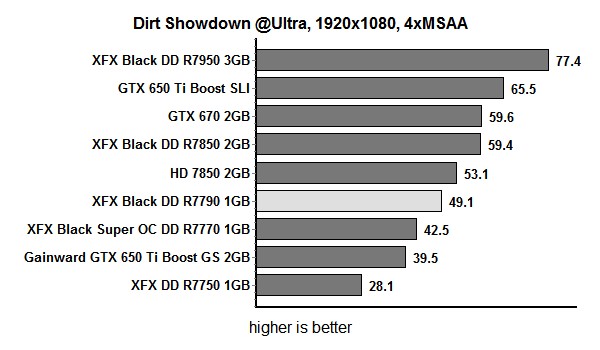
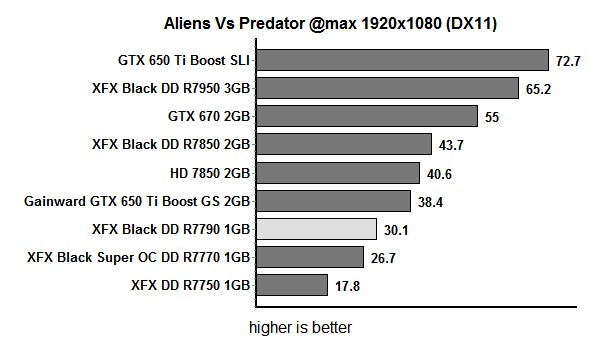
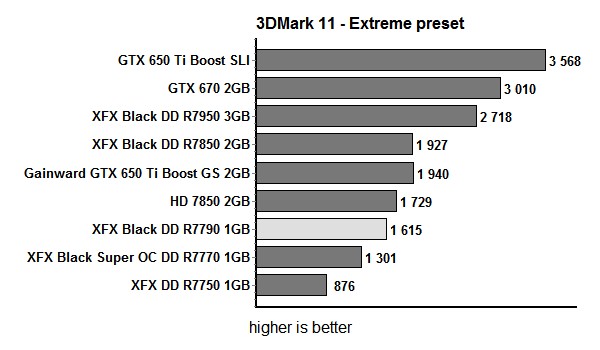
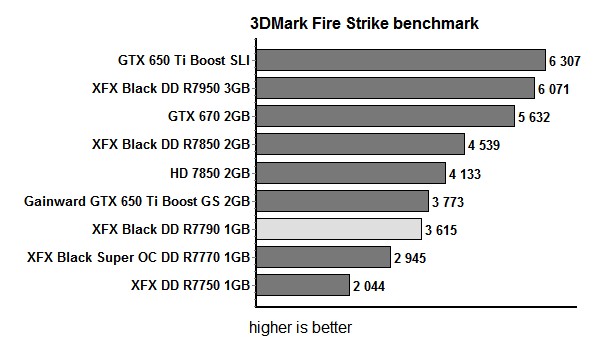
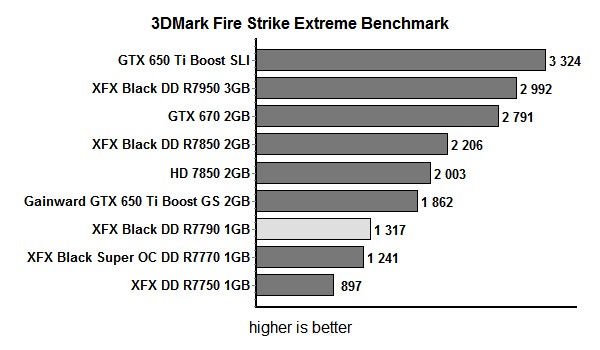
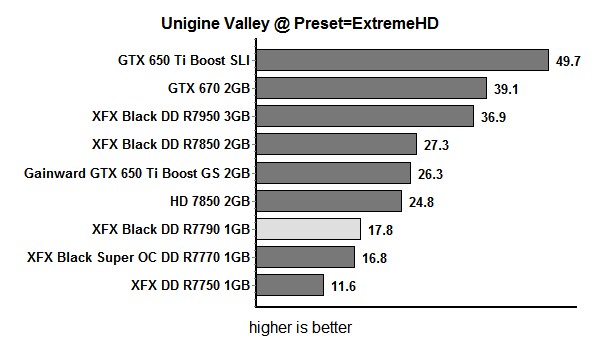
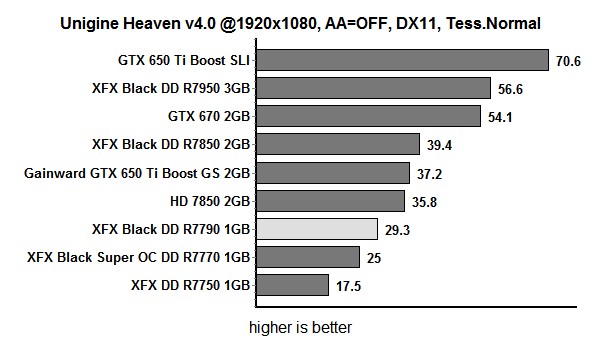
The AMD OverDrive tool can be found in the Catalyst Control Center, but it did not let us take the GPU clock past 1200MHz. The memory clock was limited to 1600MHz, which is actually the default clock on the XFX card. We faced the same limits when we tried using EVGA PrecisionX and Sapphire TriX tools. In MSI Afterburner there is an option which allows users to override AMD’s overclocking limit, so we gave it a go. After a reboot we saw that we could pull the slider over 1200MHz. At 1200MHz the card was stable, but it was also stable at 1260MHz.
Although the GPU and memory are stock overclocked from 1000MHz/1500MHz to 1075MHz/1600MHz respectively, the card did not experience any overheating issues, nor was it loud. The fans are loud when they are manually set at 75+ percent, but as long as you keep them in auto mode they will be quiet. They are not inaudible when the card is under load, but they can hardly be heard outside the chassis.
Power consumption is not high, either, up to 100W. The HD 7790 uses a bit more power than Nvidia’s GTX 650 Ti, but then again it is faster than the green team’s offering.
On the whole the HD 7790 delivers pretty good performance for just 120 euro. We should bear in mind that it sits halfway between low-end and mid-range cards, so we shouldn’t expect too much in terms of performance. Judging by our tests, the HD 7790 is sufficient for gaming on resolutions up to 1680x1050, with high detail settings and antialiasing. At 1080p it is still possible to have some fun, but with less antialiasing and details. Even at 1080p it is possible to achieve a good balance between performance and quality, which is very good news for gamers on a tight budget.
XFX Black Edition cards traditionally pack only the best GPUs and another thing we should take into consideration is the high quality cooler. The GPU is factory overclocked from 1000MHz to 1075MHz, which is nothing spectacular. Then again we believe this is AMD’s doing, as all AIBs decided to overclock their HD 7790 cards to 1075MHz. The factory overclock did not result in any noteworthy performance gains, but once we tried tinkering with the clocks we managed to hit 1260MHz for the GPU and 1700MHz for the memory.
The Black DD R7790 is also notable for using the Double Dissipation cooler, which ensures that the card remains cool and quiet at extremely high clocks.
The Radeon HD 7790 is about 20 percent faster than the regular HD 7770 and it is a much better option for gaming. The HD 7850 is even better, but then again it costs about 40 eura more than the HD 7790. In other words, the HD 7790 offers very good value for money, even without the game bundle.
The Black DD R7790 has plenty of overclocking potential and it ships with a top notch cooler. It costs about 10-15 euro more than a reference card and we believe it is worth it, easy.
